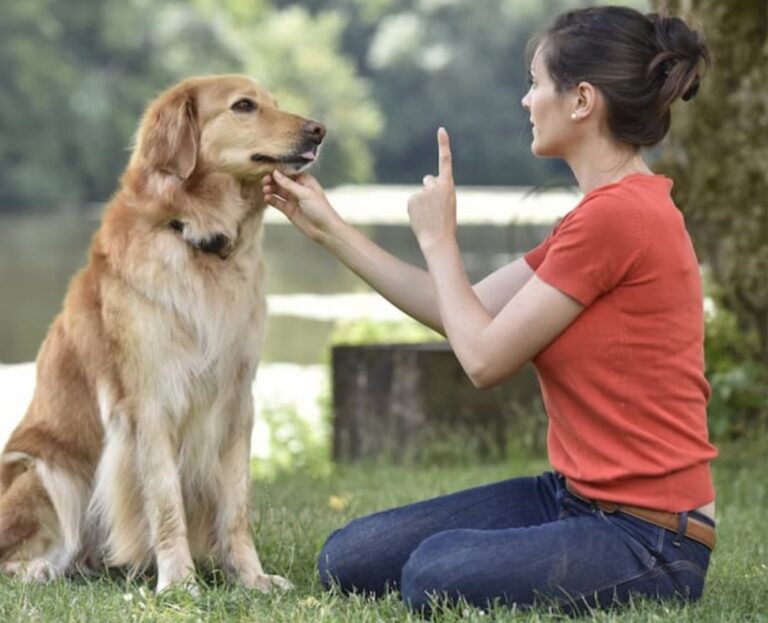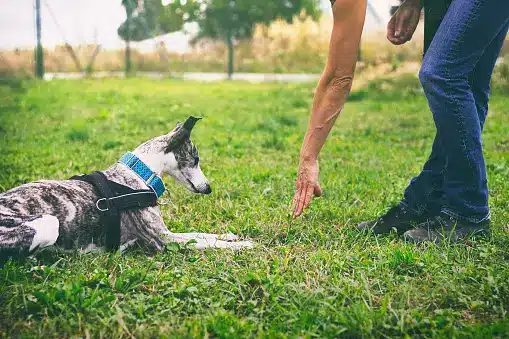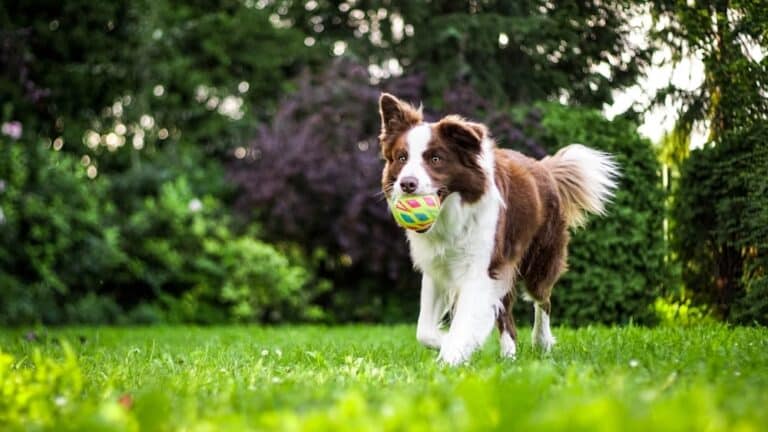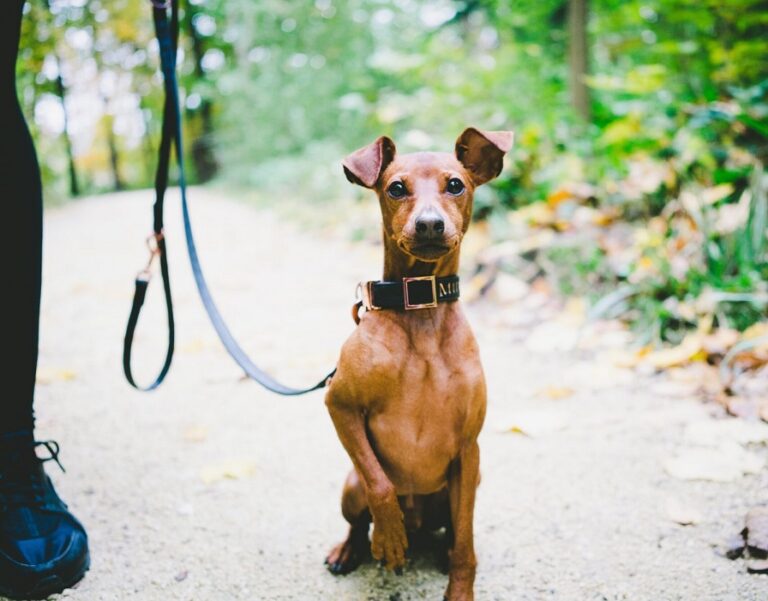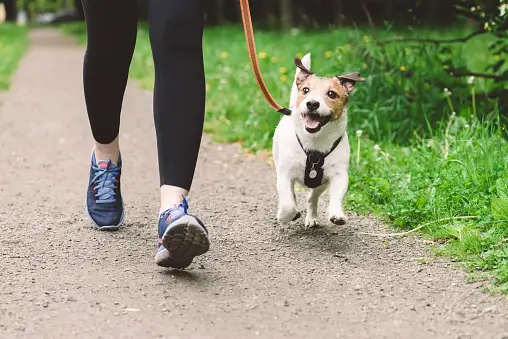Clicker training is a powerful and popular method that can help you achieve remarkable results. In this article, we will explore various clicker training strategies that will not only improve your dog’s learning abilities but also strengthen the bond between you and your furry friend. Whether you are a beginner or an experienced dog owner, these strategies will provide you with valuable insights and techniques to make training sessions fun, engaging, and productive. Get ready to unlock your dog’s full potential with clicker training!
Understanding Clicker Training
What is clicker training?
Clicker training is a positive reinforcement technique used to train dogs. It involves the use of a small handheld device called a clicker, which makes a distinct clicking sound when pressed. The clicker serves as a signal to the dog that it has performed the desired behavior correctly.
How does clicker training work?
Clicker training works by associating the sound of the clicker with a reward. The trainer initially pairs the clicker with a treat, so when the dog hears the click, it knows that a reward is coming. This creates a clear and consistent communication method between the trainer and the dog.
During training sessions, the trainer clicks the clicker at the exact moment the dog exhibits the desired behavior. This instant feedback helps the dog understand which behavior is being rewarded. With repetition and consistent reinforcement, the dog learns to associate the clicker sound with positive outcomes and becomes motivated to repeat the desired behaviors.
Benefits of clicker training
- Clear Communication: Clicker training provides a precise and consistent way to communicate with your dog. The sound of the clicker marks the exact moment of the desired behavior, making it easier for your dog to understand what you want.
- Positive Reinforcement: Clicker training is based on positive reinforcement, which means rewarding desired behaviors rather than punishing unwanted behaviors. This method creates a positive learning experience for your dog and strengthens your bond.
- Increased Engagement: Dogs enjoy clicker training because it involves fun and interactive sessions. The clicker serves as a signal that a reward is coming, keeping your dog engaged and motivated to participate in the training process.
- Faster Learning: Clicker training facilitates faster learning as it provides instant feedback to your dog. The clicker helps to capture and reinforce the correct behavior, allowing your dog to understand and learn new commands more quickly.
- Versatility: Clicker training can be used to teach a wide range of behaviors and tricks to your dog. From basic obedience commands like sit and stay to more complex tasks, clicker training can be adapted to suit various training goals.
In conclusion, clicker training is an effective and positive method to enhance your dog’s learning. By using the clicker as a clear communication tool and providing consistent positive reinforcement, you can teach your dog new behaviors and strengthen your bond in a fun and engaging way.
Getting Started with Clicker Training
Clicker training is a highly effective and popular method for teaching dogs new behaviors and strengthening their existing skills. By using positive reinforcement and a clicker as a marker for desired behavior, you can enhance your dog’s learning experience and strengthen your bond with them. In this article, we will guide you through the essential steps to get started with clicker training.
Choosing the right clicker
Choosing the right clicker is crucial for the success of your clicker training sessions. There are various types of clickers available, but the most common ones are handheld clickers and clicker apps for smartphones. When selecting a clicker, consider the following factors:
- Volume and tone: Look for a clicker with a clear and consistent sound that is not too loud or too soft. The sound should be distinct enough for your dog to recognize it amidst distractions.
- Comfort and ease of use: Ensure that the clicker fits comfortably in your hand and is easy to press. You’ll be using the clicker frequently during training sessions, so it’s important to choose one that feels comfortable for you.
- Durability: Opt for a clicker that is built to last. Dogs can be enthusiastic learners, and a clicker that can withstand accidental drops or rough handling will be more reliable in the long run.
Once you have chosen the right clicker, it’s time to introduce it to your dog.
Introducing the clicker to your dog
Before you start using the clicker for training, you need to create a positive association between the clicker sound and rewards. Follow these steps to introduce the clicker to your dog:
- Choose a quiet environment: Find a quiet space where your dog feels comfortable and there are minimal distractions. This will help your dog focus solely on the clicker sound.
- Pair the clicker with treats: Begin by clicking the clicker and immediately giving your dog a treat. Repeat this process several times, ensuring that your dog receives a treat every time they hear the clicker sound. This will help your dog associate the clicker with positive experiences and rewards.
- Observe your dog’s response: Pay attention to your dog’s behavior during the introduction. If your dog shows signs of fear or discomfort, try using a quieter clicker sound or moving further away. The goal is to ensure that your dog perceives the clicker as a pleasant sound.
Teaching the basic clicker response
Once your dog has developed a positive association with the clicker, it’s time to teach them the basic clicker response. The clicker response is a behavior that your dog will offer whenever they hear the clicker sound. Follow these steps to teach your dog the basic clicker response:
- Choose a target behavior: Select a simple behavior that your dog already knows, such as sitting or touching their nose to your hand. This behavior will serve as the foundation for the clicker response.
- Click and treat: Wait for your dog to perform the target behavior, then immediately click the clicker and give them a treat. Repeat this process several times, consistently clicking and treating whenever your dog offers the target behavior.
- Reinforce the clicker response: Gradually introduce the clicker as a cue for your dog to offer the target behavior. Click the clicker and wait for your dog to perform the behavior, then reward them with a treat. With repetition, your dog will start associating the clicker sound with the desired behavior.
By following these steps, you can effectively get started with clicker training and lay the foundation for more advanced behaviors. Remember to be patient, consistent, and always reward your dog for their efforts. With time, practice, and positive reinforcement, your dog will become an eager and responsive learner through clicker training.
Advanced Clicker Training Techniques
Shaping behavior with the clicker
One of the most effective techniques in clicker training is shaping behavior. This technique involves breaking down a desired behavior into small, achievable steps. By using the clicker to mark and reinforce each small step, you can gradually shape your dog’s behavior towards the desired end goal.
To begin shaping behavior, start with a simple action or behavior that your dog already knows. For example, if you want to teach your dog to spin in a circle, you can start by rewarding any slight movement in that direction. Click and treat when your dog makes even the smallest effort towards spinning. As your dog begins to understand the connection between the click and treat, you can start to raise the criteria and only reward more significant spins. With consistent practice and reinforcement, your dog will learn the complete behavior of spinning in a circle.
Target training using clicker
Target training is another valuable technique that can be enhanced with the use of a clicker. This technique involves teaching your dog to touch a specific object, such as a target stick or your hand, with his nose or paw. Target training can be useful for various purposes, including teaching your dog to go to a specific spot, follow a certain path, or perform specific actions.
To start target training, present the target stick or your hand to your dog. When your dog touches the target with his nose or paw, click the clicker and provide a treat as a reward. Repeat this process several times until your dog understands that touching the target results in a reward. Gradually, you can increase the distance between your dog and the target, making the task more challenging. With consistent practice, your dog will learn to follow the target and perform various actions based on your cues.
Clicker training for complex tricks
Clicker training can be particularly effective when teaching complex tricks to your dog. By breaking down the trick into smaller, manageable steps and using the clicker to mark and reinforce each successful step, you can help your dog understand and perform even the most intricate tricks.
For example, if you want to teach your dog to play dead, you can start by rewarding your dog for lying down on command. Once your dog consistently lies down, you can then introduce the clicker and reward him for remaining in that position for a few seconds. Gradually, you can increase the duration and add the cue “play dead” while rewarding your dog for staying still. By breaking down the trick into achievable steps and utilizing the clicker as a reinforcement tool, your dog will be able to learn complex tricks with enthusiasm and precision.
In conclusion, advanced clicker training techniques such as shaping behavior, target training, and training for complex tricks can greatly enhance your dog’s learning abilities. By incorporating these techniques into your training sessions and utilizing the clicker as a powerful tool for marking and reinforcing desired behaviors, you can effectively teach your dog new skills and strengthen your bond with them.
Troubleshooting Common Clicker Training Issues
Dog not responding to the clicker
If your dog is not responding to the clicker during training sessions, there could be a few reasons for this. Firstly, make sure that your dog understands the association between the clicker sound and the reward. Some dogs may need more time to grasp this connection, so be patient and consistent with your training.
If your dog still doesn’t respond to the clicker, try using a different type of clicker. Some dogs may prefer a clicker with a louder or softer sound, so experiment with different options to find what works best for your furry friend.
Another possible reason for a lack of response to the clicker could be that your dog is not motivated enough by the reward you are using. Make sure you are using high-value treats or rewards that your dog finds particularly enticing. Adjusting the reward can often make a significant difference in your dog’s responsiveness to the clicker.
Lastly, consider that your dog might be feeling anxious or stressed during the training sessions. Dogs can become overwhelmed or distracted, making it difficult for them to focus on the clicker. Ensure that you are training in a calm and quiet environment to minimize distractions and create a positive learning atmosphere for your dog.
Clicker training setbacks and how to overcome them
Clicker training, like any other training method, can sometimes face setbacks. It’s essential to understand that setbacks are a normal part of the learning process for both dogs and their owners. Here are some common setbacks you may encounter during clicker training and how to overcome them:
- Plateau in progress: If you notice that your dog’s progress has stalled, it may be time to reassess your training approach. Consider breaking down the training tasks into smaller, more manageable steps. Sometimes, dogs can become overwhelmed if the difficulty level increases too quickly. By going back to basics and gradually building up the complexity of the training exercises, you can help your dog regain confidence and progress further.
- Regression in behavior: Dogs, just like humans, can have off days or experience regression in their behavior. If your dog suddenly starts exhibiting behaviors they already learned to overcome, it could be due to various factors such as stress, fatigue, or distractions. In such cases, go back to reinforcing the basics and providing additional positive reinforcement to help your dog regain focus and motivation.
- Lack of generalization: Dogs might struggle to generalize their training in new environments or situations. If your dog performs well during training sessions at home but struggles in different locations or with distractions, it’s important to gradually introduce these elements during training. Start by practicing in slightly more challenging environments and gradually increase the difficulty level as your dog becomes more comfortable and confident.
Remember, consistency, patience, and positive reinforcement are key to overcoming setbacks in clicker training. Celebrate small victories and be persistent in your training efforts.
Dealing with distractions during clicker training
Distractions can be a significant challenge when it comes to clicker training. Dogs are naturally curious and easily influenced by their environment. Here are some strategies to help you deal with distractions during clicker training:
- Start in a controlled environment: Begin training in a quiet, familiar space with minimal distractions. This could be a designated training area in your home or a quiet corner of your backyard. By starting in a controlled environment, you can gradually introduce distractions as your dog becomes more proficient in responding to the clicker.
- Increase the difficulty gradually: Once your dog is comfortable with basic training exercises in a controlled environment, progressively add distractions. Start with mild distractions that are easy for your dog to ignore, such as a low-level noise or a mild movement. Gradually increase the intensity of distractions over time, allowing your dog to build up their focus and concentration.
- Use higher-value rewards: When dealing with distractions, it’s important to provide rewards that are more enticing than the distractions themselves. Use treats or rewards that your dog finds extremely rewarding and reserve them specifically for training sessions. This will help maintain your dog’s attention and motivation, even in the presence of distractions.
- Practice impulse control exercises: Teaching your dog impulse control exercises, such as “leave it” or “stay,” can be extremely helpful in managing distractions during clicker training. These exercises teach your dog to resist the urge to engage with distractions and focus on you instead. Incorporate these exercises into your training sessions and gradually increase the difficulty level as your dog becomes more proficient.
Remember, distractions are a part of everyday life, and it’s important to train your dog to respond to the clicker in various environments. With consistent practice and gradual exposure to distractions, your dog will become more resilient and focused during clicker training sessions.
Combining Clicker Training with Positive Reinforcement
Using treats as rewards in clicker training
One of the key strategies in clicker training is using treats as rewards to reinforce desired behaviors in dogs. When incorporating clicker training with positive reinforcement, treats serve as a powerful motivator for dogs to learn and perform desired actions.
When using treats as rewards in clicker training, it is important to choose high-value treats that your dog finds particularly enticing. This can be anything from small pieces of cooked chicken or cheese to commercially available dog treats. By using treats that your dog loves, you can ensure that they are highly motivated to learn and respond to the clicker cues.
To effectively incorporate treats as rewards in clicker training, follow these steps:
- Start by establishing the association between the clicker sound and the treat. Click the clicker and immediately offer a treat to your dog. Repeat this several times until your dog understands that the clicker sound predicts a reward.
- Once your dog grasps the association between the clicker and the treat, you can begin using the clicker to mark desired behaviors. For example, if you are teaching your dog to sit, click the clicker the moment their bottom touches the ground and offer them a treat as a reward.
- Consistency is key when using treats as rewards in clicker training. Ensure that you always follow up the clicker sound with a treat, and deliver the treat promptly after the click. This immediate reward reinforces the connection between the desired behavior and the treat, making it easier for your dog to understand and repeat the behavior in the future.
Incorporating praise and petting with the clicker
While treats are an effective form of positive reinforcement in clicker training, it is important to also incorporate praise and petting as additional rewards. Dogs thrive on positive attention from their owners, and combining praise and petting with the clicker can further enhance their learning experience.
When incorporating praise and petting with the clicker in training sessions, keep the following tips in mind:
- Use a positive and enthusiastic tone of voice when praising your dog. Let them know how happy you are with their progress and efforts. Dogs are highly attuned to their owner’s emotions and can pick up on the positive reinforcement conveyed through your voice.
- Along with verbal praise, physical touch in the form of petting can be a powerful motivator. Stroke your dog’s fur and offer gentle pats on their back or head when they successfully perform a desired behavior. This physical connection reinforces the bond between you and your dog and encourages them to continue learning and responding to the clicker cues.
- Remember to use the clicker sound as a marker for the desired behavior, and immediately follow it up with praise and petting. This helps your dog understand that the clicker serves as a signal for positive reinforcement, and the subsequent affectionate gestures further reinforce their actions.
Maintaining a positive training environment
Creating and maintaining a positive training environment is vital for successful clicker training. Dogs are more likely to learn and respond to clicker cues when they feel comfortable, secure, and motivated during training sessions.
To ensure a positive training environment, consider the following:
- Choose a quiet and distraction-free area for training sessions. Avoid locations with excessive noise or high foot traffic that may distract or overwhelm your dog. A calm environment allows your dog to focus better on the training exercises.
- Keep training sessions short and frequent. Dogs have shorter attention spans, so it is important to keep training sessions brief, typically around 10-15 minutes at a time. Regular, frequent sessions throughout the day help to reinforce learning and prevent fatigue or boredom.
- Use positive reinforcement consistently throughout the training process. Whether it’s treats, praise, or petting, make sure you consistently reward your dog for desired behaviors. This consistency helps them understand what is expected of them and encourages them to continue learning and responding to the clicker cues.
By combining clicker training with positive reinforcement, utilizing treats as rewards, incorporating praise and petting, and maintaining a positive training environment, you can enhance your dog’s learning experience and promote effective training outcomes.
Clicker training is a highly effective and versatile method for enhancing your dog’s learning. By utilizing positive reinforcement and clear communication, you can teach your dog a wide range of commands and behaviors. Whether you are starting with a new puppy or working with an older dog, clicker training can be tailored to suit their individual needs and abilities. Through consistency, patience, and plenty of praise, you will not only strengthen the bond between you and your furry friend but also help them become a well-behaved and obedient companion. So, start incorporating clicker training strategies into your dog’s training routine and watch them thrive and excel in their learning journey.


